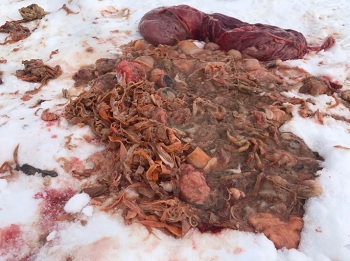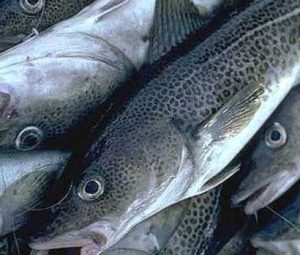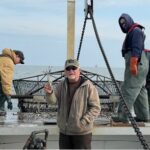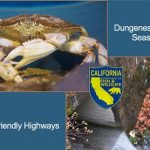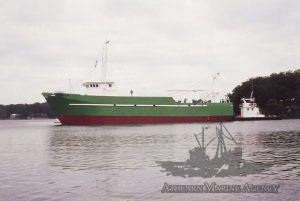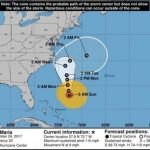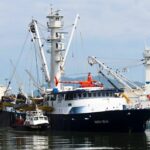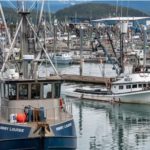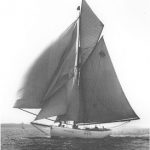Tag Archives: DFO
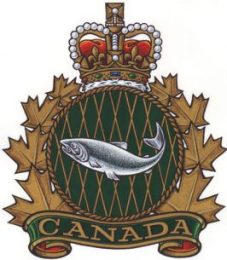
Fisheries Minister Jordan: A new path for First Nations to fish in pursuit of a moderate livelihood
We have never stopped working with First Nations to reach agreements and implement their right to a moderate livelihood. That is why effective this season, we will introduce a new path for First Nations to fish in pursuit of a moderate livelihood, one that addresses much of the feedback we’ve heard over the past year. This plan will support individuals, their families, and their communities. It’s a path that is flexible, adaptable, and based on three key principles: implementation of First Nations Treaty rights, conservation and sustainability of fish stocks, and transparent and stable management of the fishery. >click to read< 21:53
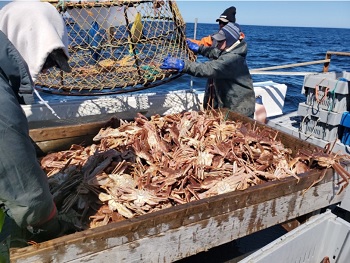
Good news for Newfoundland fishermen, plant workers, and processors in the snow crab fishery
The snow crab fishery should continue to be an economic bright spot for the Newfoundland and Labrador economy in 2021. The latest report from Fisheries and Oceans (DFO) science shows modest improvements in snow crab biomass in several fishing zones around the province. The good news from science is that the snow crab stocks appear to be recovering in some areas.,, Julia Pantin, DFO’s lead biologist for snow crab in the Newfoundland region, said the population of crabs becoming available to the fishery is expected to increase over the new two to four years in most areas. >click to read< 11:30
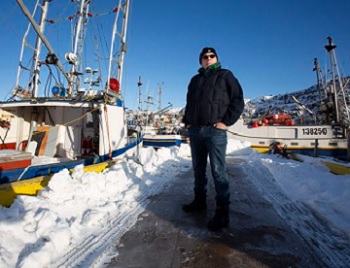
Is politics getting in the way of rebuilding a sustainable fishery in Newfoundland?
The sentinel program, created after the cod moratorium in 1992 to monitor fish populations, is run exclusively by the Fish Food & Allied Workers, the powerful union that represents around 15,000 fishermen, fish plant employees and other workers in the province. DFO relies on data from the sentinel fishery to help assess fish stocks, and has paid the union millions to run the program. “The FFAW and the DFO are cheating the fishermen out of a resource that belongs to the people of Newfoundland,” said Jason Bateman, a former enforcement officer with DFO. Ryan Cleary, a former member of Parliament for St. John’s-Mount Pearl and an outspoken critic of the FFAW, said the union has found a way to prosper since the collapse of cod by integrating itself into fisheries management, acting almost as a regulator, while becoming a vocal industry voice that contradicts science. >click to read< 17:55
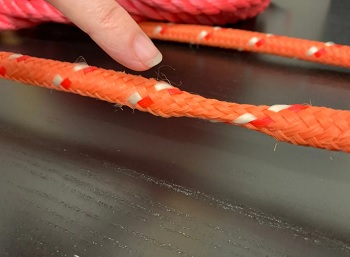
P.E.I. lobster fishermen want exemption from new gear rule aimed at protecting whales
Island lobster fishermen should be be exempt from using gear designed to break free in the event of a whale entanglement, according to the P.E.I. Fishermen’s Association (PEIFA). The PEIFA wrote a letter to the Department of Fisheries and Oceans (DFO) to request lobster fishermen be exempt from new rules, which are expected to become mandatory by the end of 2022. The group says sighting data shows the endangered North Atlantic right whale is rarely in P.E.I. lobster fishing grounds. >click to read< 10:46
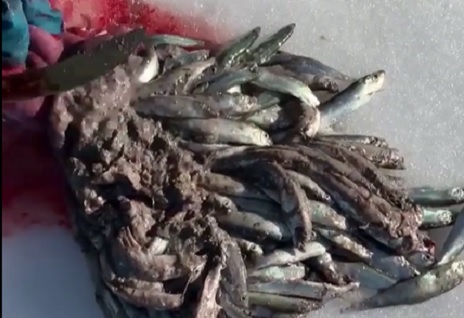
Wow. Just, Wow. A belly full of fish ramps up seal debate
If you have a weak stomach, the video might be difficult to watch. But for fish harvesters in Newfoundland and Labrador, the images of a seal stomach being cut open to reveal a gut full of small herring and Arctic cod is proof enough that seals are a factor in the slow recovery of cod stocks. Last week Dion Weir and a buddy hunted a few seals for personal use in Hall’s Bay, off the Baie Verte Peninsula. They were filled with small fish. “Up in these bays now they’re eating herring and Arctic cod,” Weir said. “Wherever the cod is, the seals are there.” Multiply that by 7.6 million seals,,, >click to read< 15:42
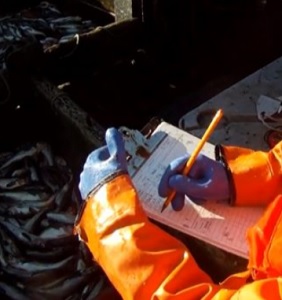
‘Trapped’: Women Working as Fishery Observers Allege Sex Harassment, Assault at Sea
She had overcome the seasickness, the unreliable shifts, and the long hours that drive many people out of the business. But she didn’t sign up for 3 1/2 weeks of harassment. On the ship that served as both her workplace and temporary home, Kim, then in her mid-20s, was constantly catcalled, hit on, and leered at, with no place to escape. Four women, including Kim, who worked on the front lines of fisheries monitoring in Canada, say they were dropped into a hellish grind of sexual harassment, assault, intimidation, threats, and horrifying animal abuse while they watched helplessly. >click to read< 10:15
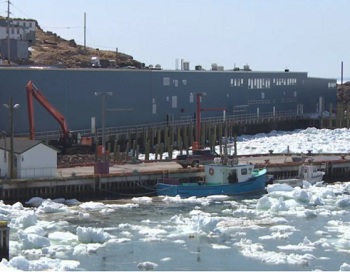
Fight for our fisheries. Provincial politicians need to pressure Ottawa to manage our fisheries
Gus Etchegary doesn’t mince words when it comes to the state of Newfoundland and Labrador’s fishery. The longtime fishery advocate laments that since the 1992 cod moratorium the federal government has “practically abandoned” the province’s fishery. The fishery is federally regulated, but he says doesn’t absolve the provincial government from its role “to be continuously pressuring Ottawa to take on the role that they were given in 1949, and that is to manage our fisheries in the same style as Iceland and Norway,” he said, pointing to two fishing powerhouses in the North Atlantic. >click to read< 12:15

DFO is making new fishing rules. Will they work? (without addressing seal/sea lion over population issues they won’t)
The proposed rules codify pre-existing internal DFO policies and require the ministry to assess the health of key fish populations in “batches”, salmon, rockfish and cod are in the first batch of 30, to figure out why their populations have declined (or could decline) and lay out a plan to bring the stocks back to healthy levels. If the ministry doesn’t comply or opens a threatened fishery, it could be sued. Similar, but more stringent, regulations have been successfully implemented in other jurisdictions with major fisheries, like the U.S. and the EU. >click to read< 07:50
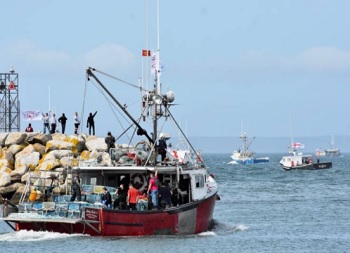
Failed policies, decisions on the fly: How the moderate livelihood fishery file blew up
Documents obtained through a freedom of information request show the federal Fisheries Department knew that 21 years of kicking the moderate livelihood issue down the election cycle had resulted in there being little rule of law on St. Mary’s Bay. The feds knew that the bay had become a pressure cooker as two communities were pitted against one another over a limited resource. When the top blew off, they turned to coming up with new policy on the fly while seeking a daily scorecard on evolving public opinion. “This is about a culture (in Ottawa) that would rather avoid any conflict at all,” said Thomas Isaac, an aboriginal rights lawyer who has served as British Columbia’s chief treaty negotiator,,,>click to read< 13:49
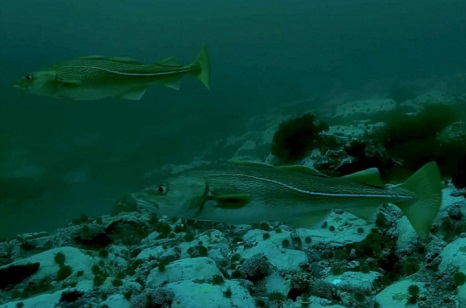
NL Groundfish Industry Development Council can’t support federal cod stock rebuilding program
The Newfoundland and Labrador Groundfish Industry Development Council says it can’t support the federal government’s recently announced cod stock rebuilding plan, saying it’s overly restrictive and will not enable the industry to rebuild as the cod stock rebuilds. Jim Baird, chair of the NL-GIDC, wants to see further surveys done based around the impact of seals and capelin stocks, adding the entire plan appears to be based around limiting the catch for harvesters and not other sources which could be impeding the development of cod stocks. >click to read< 22:32

New DFO regulations, 30 major commercial stocks have been identified for rebuilding
Canada is putting into law a requirement that it rebuild depleted commercial fish stocks, starting with 17 stocks that include Atlantic cod off Newfoundland, spring spawning herring in the Gulf of St. Lawrence and three Pacific salmon stocks. They account for more than half the 30 major commercial stocks identified for specific protection in amended Fisheries Act regulations published Jan. 2. >click to read< 11:33
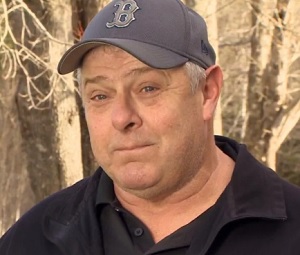
Would throwing the big ones back keep Atlantic halibut fishery on a roll? DFO considers changing the rules!
The investigation is being undertaken at the request of companies that fish halibut using hook and line from the Grand Banks off Newfoundland to Georges Bank off southern Nova Scotia. They’d like to see it happen. “Releasing large halibut is something that fishermen will say, and I will say, that’s just logical, because the majority of the large halibut are females. But you really don’t know just what goes on after you release a large halibut like that,” said Gary Dedrick, a halibut fisherman from Shelburne, N.S., and a founding member of the Atlantic Halibut Council. “So this is where there is monitoring on the bottom and how long they live.” >click to read< 09:45
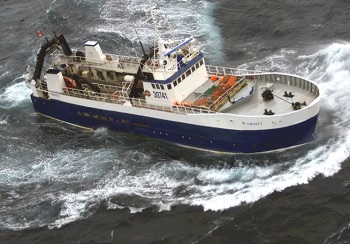
Bocaccio rockfish are still endangered, but a huge birthing event in 2016 has it popping up everywhere
A species of fish you’ve probably never heard about has made a major comeback from being endangered, but now B.C. fishermen can’t avoid catching it, threatening their ability to earn a living. “This is a great news and a terrible news story,” said Brian Mose, a skipper and representative of the Deep Sea Trawlers Association in B.C.,, Some fishermen are worried that if they go out on the water, they’ll catch their limit of bocaccio and then be prevented from fishing at all. >click to read< 08:49
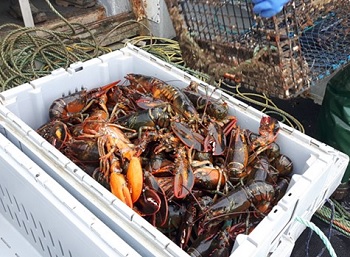
Livelihood lobster fishing cast adrift: How DFO’s inaction has history repeating itself
Its resources are in high demand by Indigenous and non-Indigenous fishers alike, and for more than 20 years it has seen tensions between the two communities turn from boil to simmer, to boil again. Recently, it made headlines internationally. Tensions in the area erupted into violence and destruction after the Sipekne’katik First Nation launched its own, self-regulated fishery, outside of the commercial season, based on Mi’kmaq treaty rights. To Alex McDonald, one of the oldest still-fishing Indigenous lobster boat captains of the area, the chaos this year was nothing new. >click to read< 08:14
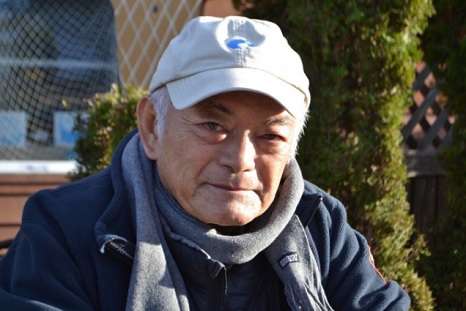
Lifelong Ucluelet fisherman Doug Kimoto shares his thoughts on restoring fisheries
Doug Kimoto’s livelihood begins with a 42-foot commercial salmon troller named ‘La Perouse.’ The wooden fishing vessel has been a member of his Japanese-Canadian family for 70 years. “I started commercial fishing with my father when I was about 13-years-old,” His father, Tom Kimoto, lost about 10 years of his life as a result of being forced into a Canadian Japenese internment camp, Kimoto recalls. “These last few years, it’s been a disaster,” he says. “Years ago you could make a decent living, but now it’s down to what you’d call not even a minimum wage for most fishermen.” >click to read< 07:03

This Year May Decide the Fate of BC’s Wild Salmon – Feds to phase out all Discovery Islands fish farms in 2022
Three decisions may well seal the fate of wild Pacific salmon along the coast of British Columbia this year. The first was the Department of Fisheries and Oceans’ decision to essentially legalize high sea lice infestations on fish farms for periods of time last spring. The second was DFO’s calculated response to the Cohen Commission’s recommendations that fish farming must end by Sept. 30, 2020 in the Discovery Islands unless the federal fisheries minister can show that they cause less than minimal risk to migrating juvenile Fraser River sockeye salmon. Minister Bernadette Jordan said that there was no real risk. The third decision is said to be imminent. >click to read< 19:07
 Feds to phase out all Discovery Islands fish farms in 2022 – The federal government says it will phase out all fish farms in B.C.’s Discovery Islands by June 2022. Fisheries and Oceans Canada says no new fish of any size may be introduced into the region from now until the phase-out date. Existing salmon farms can continue to operate in the island archipelago, located between Vancouver Island and the B.C. mainland, until June 30, 2022. After that date they must be free of fish and closed down. >click to read< , Government of Canada moves to phase out salmon farming licences in Discovery Islands following consultations with First Nations – DFO press release, >click to read<
Feds to phase out all Discovery Islands fish farms in 2022 – The federal government says it will phase out all fish farms in B.C.’s Discovery Islands by June 2022. Fisheries and Oceans Canada says no new fish of any size may be introduced into the region from now until the phase-out date. Existing salmon farms can continue to operate in the island archipelago, located between Vancouver Island and the B.C. mainland, until June 30, 2022. After that date they must be free of fish and closed down. >click to read< , Government of Canada moves to phase out salmon farming licences in Discovery Islands following consultations with First Nations – DFO press release, >click to read<
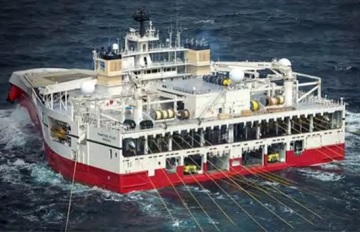
Scientists cast doubt on seismic testing environmental mitigations in N.L.’s offshore
Jack Lawson spent part of this past summer listening for whales around Newfoundland, using recorders moored underwater to track their movements and hear what man-made sounds they may encounter. “All you can hear 24 hours a day, for months on end, every 10 seconds is the boom of a seismic array going off at various distances from our acoustic receivers, and this has made it very hard for us to detect some species, The guns make it hard for Lawson and his team’s recorders, with the technology confusing the pulsing calls of right whales with seismic activity in the distance, DFO scientists thought they’d recorded tens of thousands of instances of right whale calls in the Flemish Pass in 2019, Lawson said. “[But] when we actually went through and manually reviewed these, none of them turned out to be real.” >click to read< 10:41

Owner Operator/Fleet Separation Policies: Measures to prevent corporate takeover of Atlantic inshore fleets go into law
Wednesday, the Department of Fisheries and Oceans published amended Atlantic Fishery regulations that include the so-called owner-operator and fleet-separation policies. The owner-operator policy requires the eligible holder of a fishing licence to be the beneficiary of the licence, and fleet separation prevents processing companies and buyers from also holding fishing licences. “It’s a great day for the inshore fishery and we’re super happy with the results of this announcement,” >click to read<14:16 To read more about this, >click here<
Minister Jordan strengthens protections for inshore commercial fish harvesters on East Coast – Under the authorities granted by the modernized Fisheries Act, Fisheries and Oceans Canada has amended the Atlantic Fishery Regulations, 1985 and the Maritime Provinces Fishery Regulations to clarify the rules governing inshore licences and create new enforceable requirements. >click to read<
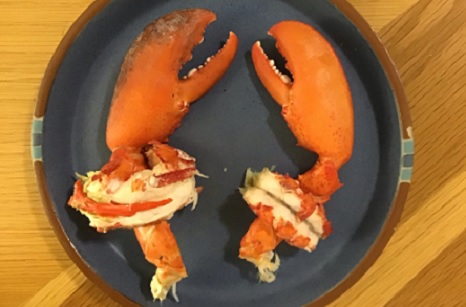
Opinion: The Reason for No Season – Jim O’Connell
These are 2 females. The black shelled female on the left did not shed this year for the first time skipping the yearly shed. It now has eggs. It was a pound and a half and does not have to shed every year anymore.,,, Canada is not protecting the reproductive potential with it’s seasonal rules. They force the lobstermen to throw the baby out with the bath water. Lobstermen who are trying to make a living for the whole year in two months are targeted on the most important lobster for reproduction.,,, The First Nations have publicly come out and said they want to improve the regulations on the present method for sustainability. Jim O’Connell, >click to read< 15:36
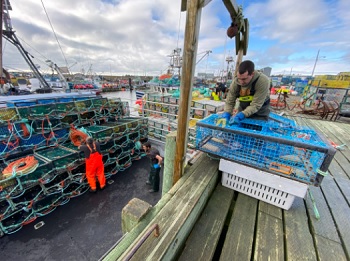
LFA 33 to open, Monday a no-go for LFA 34: weather forecast leads to split start of commercial lobster season
The fishery in Lobster Fishing Area (LFA) 33, which runs along the province’s south shore will open as scheduled on Monday, with boats leaving at 7 a.m. But that’s not the case for LFA 34 off southwestern Nova Scotia, which, following days of fine weather over the weekend, won’t see boats heading out for dumping day on the traditional last Monday of November. With boats loaded with traps and gear for the start of the season, two industry and stakeholder conference calls held over the weekend,,, “The lobster fishery is vital to our region and our province, and there is a very real anxiety among our community members that this important economic driver is in jeopardy, >click to read< 15:30

Replenishment, or Misguided Retribution?! Trouble brewing ahead of start to Nova Scotia fall lobster season
The recent seizure of lobster traps in St. Marys Bay by federal officials could lead to big trouble on the water. Chief Mike Sack of the Sipekne’katik First Nation says Indigenous fishers whose traps were taken last weekend and on Wednesday will replace them by taking the traps of commercial fishers when the fall season opens Monday in southwestern Nova Scotia, a huge event known as Dumping Day. “Dumping Day is going to be about 400,000 traps that our people get to pick from to replenish our traps,” Sack said in an interview, referring to the start of Canada’s largest and most lucrative lobster fishery. >video, click to read< 08:02
 Tension could rise again on Monday in lobster dispute on east coast – The ongoing dispute between Indigenous and non-native lobster fishers could get tense once again. Last weekend, and on Wednesday, agents from Fisheries and Oceans Canada (DFO) seized hundreds of Indigenous lobster traps, ostensibly because the traps were set before the season opens on Monday.. >click to read<
Tension could rise again on Monday in lobster dispute on east coast – The ongoing dispute between Indigenous and non-native lobster fishers could get tense once again. Last weekend, and on Wednesday, agents from Fisheries and Oceans Canada (DFO) seized hundreds of Indigenous lobster traps, ostensibly because the traps were set before the season opens on Monday.. >click to read<
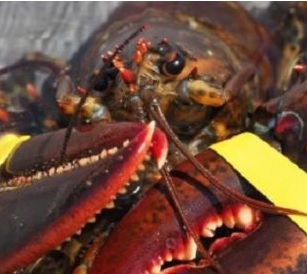
DFO officers seize 500 lobster traps in St. Marys Bay
The Department of Fisheries and Oceans says enforcement officers are going back to St. Marys Bay in southwestern Nova Scotia where they seized hundreds of lobster traps on the weekend in an area used by Mi’kmaw fishermen. Todd Somerville, DFO’s director of conservation and protection for the Maritimes, said 500 traps were seized for a variety of violations. “Untagged gear, improperly configured gear, gear that hadn’t been tended in a while. There was gear where dead lobsters were found. Over 6,000 lobsters, live lobsters, were returned,,, >click to read< 18:17
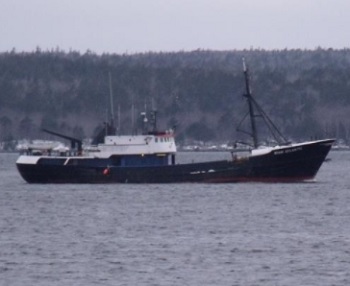
Lobster: the last, best fishery – Stocks are healthy, but why?
In the early 2000s, while he was working on one of Clearwater Seafoods’ four offshore lobster boats in Lobster Fishing Area (LFA) 41, Frank – not his real name – was deeply impressed by the incredible lobster catches, and the incredible size of the lobsters. Frank tells the Halifax Examiner that at the time there hadn’t been a lot of lobster fishing in LFA 41, and it wasn’t until 2007 that Clearwater obtained the last of its eight licences, which gave it a  monopoly on offshore lobster. The boat Frank was on would fish with 27 strings of gear, and each of those had 125 traps for a total of 3,375 traps. They would fish close to the 50-mile line, which divided the offshore from the inshore fishery. Frank remembers when on a single day in the fall of 2005, they landed 28,000 lobsters. Part 1. >click to read< Part 2 – 11:05
monopoly on offshore lobster. The boat Frank was on would fish with 27 strings of gear, and each of those had 125 traps for a total of 3,375 traps. They would fish close to the 50-mile line, which divided the offshore from the inshore fishery. Frank remembers when on a single day in the fall of 2005, they landed 28,000 lobsters. Part 1. >click to read< Part 2 – 11:05
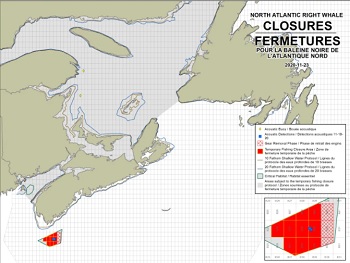
Canada orders temporary fishery closure in the Roseway Basin after detecting North Atlantic right whales
The latest order, issued Monday, closes several fisheries until further notice and could affect the lucrative commercial lobster fishery when the season opens next week.,, Since Nov. 9, acoustic sensors on board a marine glider cruising the area made 11 separate right whale detections.,,, Whales behavior is not understood. Because of a forecast for bad weather, fishermen have been given until Thursday to remove gear from parts of the Roseway Basin where the whales were most recently detected. The implications for the lobster fishery are potentially dramatic. Lobster Fishing Areas 33 and 34 from Halifax to Digby are the most valuable in Canada. >click to read< 07:24
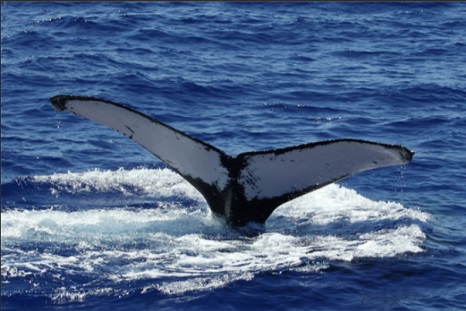
No North Atlantic Right Whale Deaths In Canadian Waters This Year
It has been a good year for the endangered North Atlantic right whale in Canadian waters. Federal officials say no deaths or new entanglements have been reported to date. The government credits “significant” action taken to help protect the whale. A new season-long fishing area closure protocol was introduced in the Gulf of St. Lawrence based on where whales were detected. Fisheries and Oceans Canada also expanded the scope of where temporary and season-long closures were applied. >click to read< 15:50
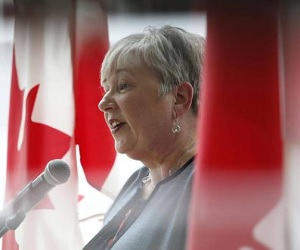
DFO’s Jordan defends government actions during violence over Mi’kmaw fishery – Chiefs say DFO only looking out for non-Indigenous fishers
Despite admitting she hasn’t read the entire Marshall decision, Department of Fisheries (DFO) Minister Bernadette Jordan says her government is committed to implementing the Mi’kmaq Nation’s treaty right to catch and sell fish commercially in their traditional territories across the Maritimes, which the landmark ruling guarantees. >click to read< Mi’kmaw chiefs say DFO only looking out for non-Indigenous fishers – Mi’kmaw chiefs appearing before a Parliamentary committee looking into fishing rights say the Department of Fisheries and Oceans (DFO) is not upholding its treaty obligations and is only looking to appease non-Indigenous fishers rather than implementing Mi’kmaw rights. >click to read< 11:02
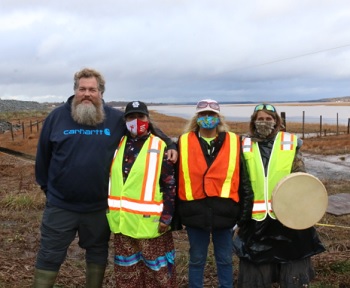
Highway 101 shut down as Avon River causeway protestors urge action to allow free fish passage
On Nov. 16, Howe was among the dozens of people who gathered to hold a ‘respectful, reduced traffic flow’ on Highway 101. The majority of traffic was detoured but some trickled through, starting and stopping in six-minute intervals to reflect the short time frame that fish have to pass through the gated structure. It was an inconvenience to many motorists – but according to fisherman Darren Porter, it was a necessary move. “At the end of the day, how else do you get media here?” asked Porter, while surrounded by water defenders. Porter has been drawing attention to the limited fish passage in Windsor for several years. >click to read< 07:38
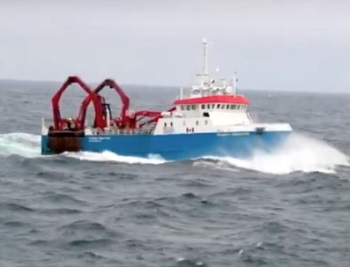
Independent inshore lobster fishermen fear the Clearwater purchase could decimate their livelihoods
In 2018, then-Minister of Fisheries and Oceans, Dominic Leblanc, put an end to Clearwater’s 20-year monopoly on the lucrative offshore fishery of Arctic surf clam when he allocated a quarter of the clam quota to the Five Nations Clam Company,,, Clearwater threatened legal action over the deal, and after it emerged that LeBlanc had family ties to Premium Seafoods, the plan was cancelled. Clearwater regained its surf clam monopoly for a year. Then in 2020, just nine days before Sipekne’katik First Nation launched its moderate livelihood fishery in Saulnierville in Southwest Nova, Clearwater announced that Membertou First Nation had purchased two of its eight licences for offshore lobster, over which the company had a monopoly,,, >click to read< Search Results for: Five Nations Clam Company, (lots )>click here< 20:56

Federal fisheries minister concerned about size of Mi’kmaq fishery in Cape Breton bay
Bernadette Jordan said Friday that while the government recognizes the Mi’kmaq treaty right to fish, the scale of the lobster harvest in the bay is exceeding proposals made by Indigenous fishers. “While lobster stocks are generally healthy, monitoring has recently indicated that fishing activities have significantly increased in St. Peters Bay,” the minister said in a statement. >click to read< 09:32
N.S. Seafood Alliance declares opposition to out-of-season moderate livelihood fishery – The Nova Scotia Seafood Alliance said it supports the treaty right, but it must be subordinate to limits set and policed by the government of Canada. >click to read<






